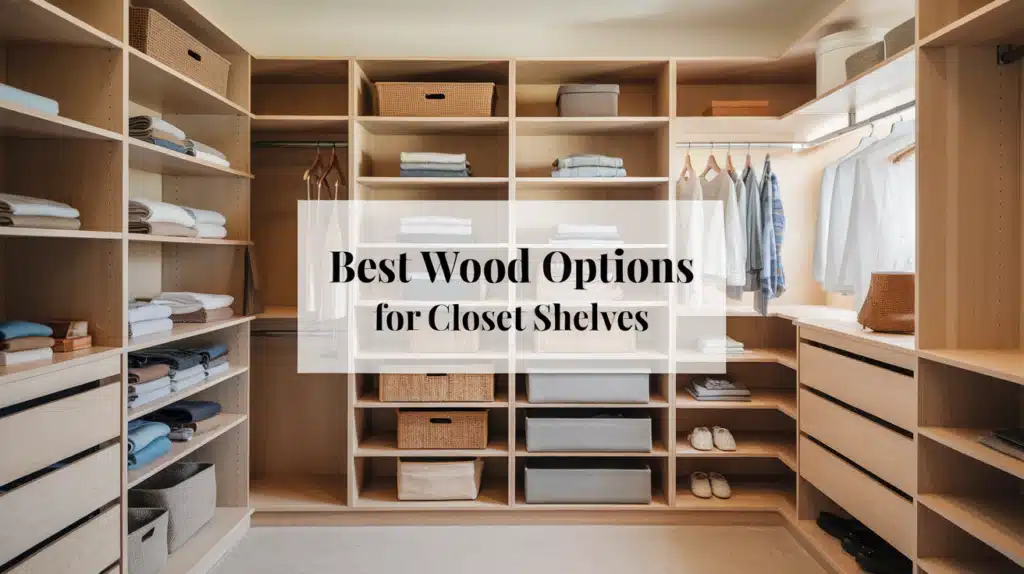Are you struggling to pick the right wood for your closet shelves? I’ve been there too. Your choice of wood affects more than just how your closet looks. It impacts how long your shelves last and how much weight they can hold.
In this guide, I’ll share the best wood options for your closet shelves. You’ll learn which woods are budget-friendly, which ones can handle heavy items, and which ones look the best. By the end, you’ll know exactly which wood type fits your specific needs.
I’ve built dozens of closet systems over the years. I’ve made mistakes, so you don’t have to. My goal is to help you avoid costly errors and build shelves that will last for years to come.
If you’re a DIY beginner or a seasoned pro looking to upgrade your storage, this article has the answers you’re searching for.
Best Woods for Your Closet Shelves
With so many options available, here are some of the best wood types to consider for closet shelving. Each one offers a unique combination of appearance, strength, and cost.
1. Solid Pine
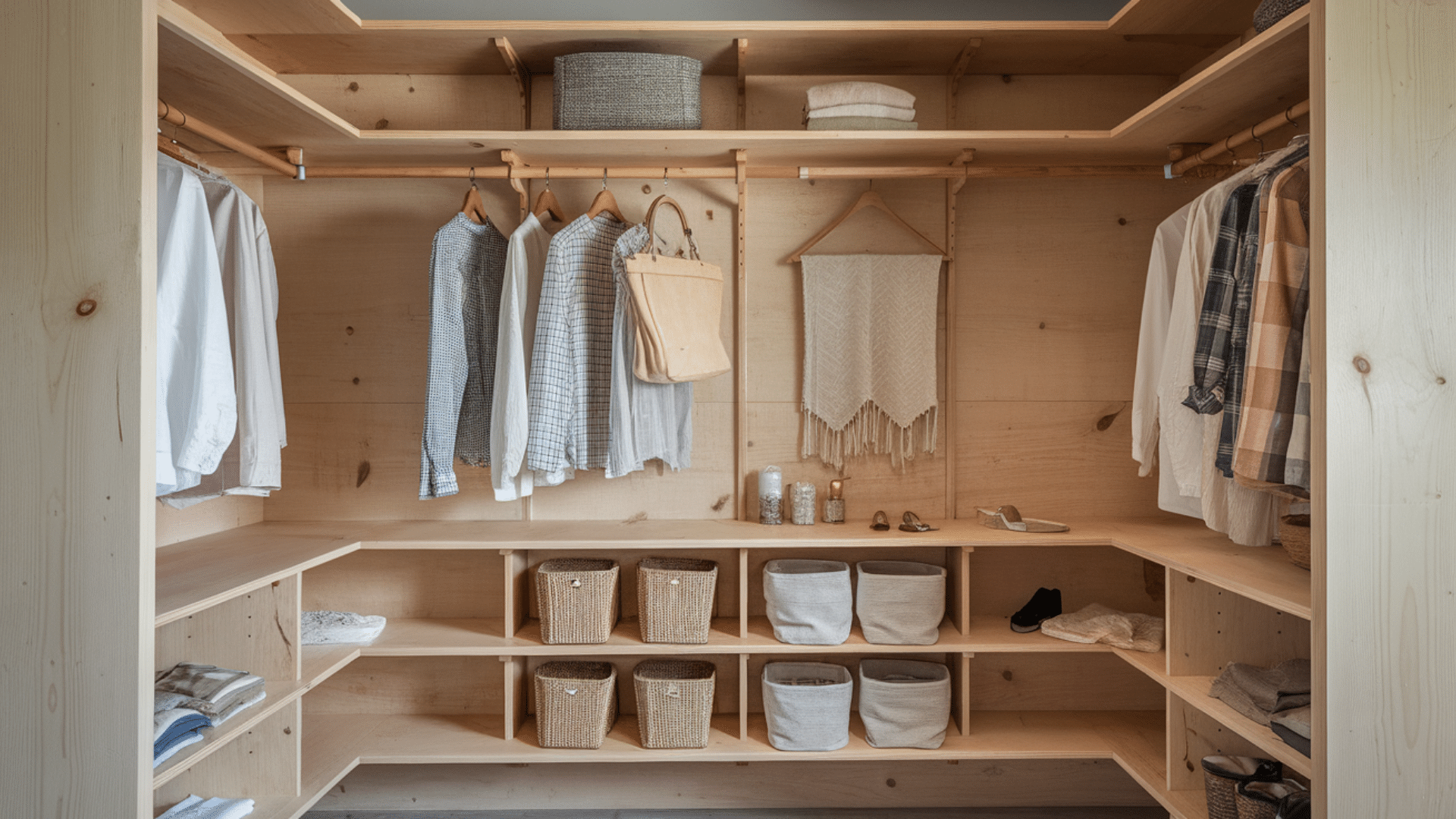
Solid pine makes a great choice if you’re watching your wallet. This softwood costs less than many other options. You can find it at almost any home improvement store.
Pine takes stain really well. You can make it match almost any color scheme in your home. It’s also super light and easy to work with.
Even if you’re new to DIY projects, you can cut and install pine shelves without special tools.
The downside? Pine dents and scratches more easily than hardwoods. It’s not the best choice for shelves that will hold heavy items. Over time, pine shelves might sag if loaded with books or heavy sweaters.
Pine works best for:
- Light storage needs
- DIY beginners
- Rustic or casual closet styles
- Tight budgets
2. Plywood
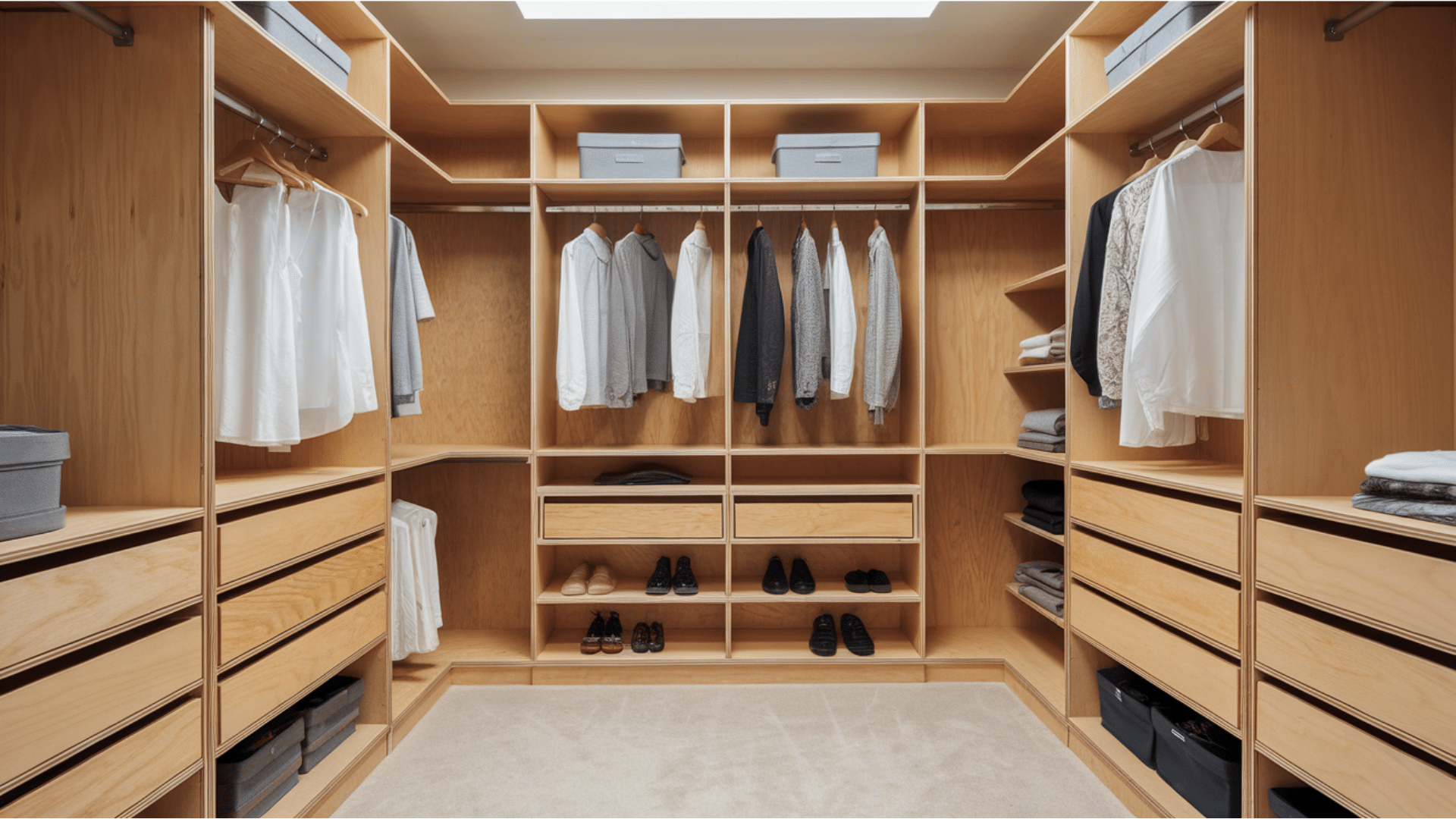
Plywood offers impressive strength at a reasonable price. It’s made of thin wood layers glued together, creating a stable material that resists warping.
The biggest advantage of plywood is that it comes in large sheets. This means fewer seams in your closet system.
You can easily cover large areas without breaks. Plywood also holds screws well, making installation straightforward.
However, plywood edges don’t look great unless finished. You’ll need to add edge banding or trim to hide the layers. Lower grades of plywood may also have voids or patches that affect appearance.
For the best results:
- Choose cabinet-grade or hardwood plywood
- Plan to finish the edges with veneer or trim
- Use 3/4-inch thickness for most closet shelves
- Consider a clear finish to show the natural grain
3. MDF
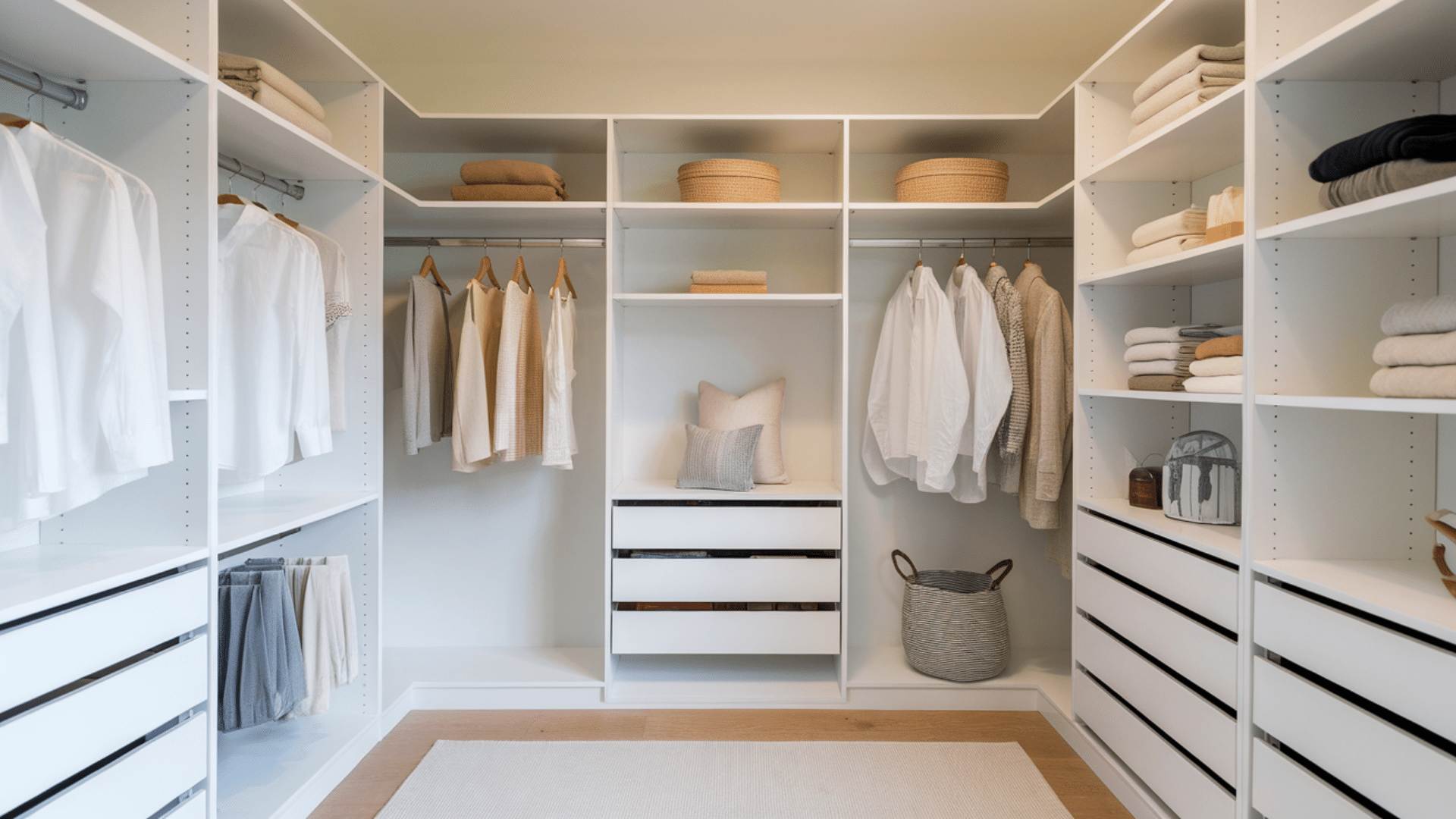
MDF (Medium-Density Fiberboard) gives you a perfectly smooth surface. It has no grain, knots, or imperfections. This makes it ideal if you plan to paint your shelves.
This engineered wood costs less than solid wood options. It cuts cleanly and doesn’t splinter, making it user-friendly for home projects. MDF also comes in large sheets, allowing for continuous shelving.
The downsides are significant, though. MDF weighs more than solid wood. It can sag under heavy loads, especially over wide spans.
It also swells when exposed to moisture, making it a poor choice for humid areas.
MDF works best when:
- You want a painted finish
- Your spans are short (under 30 inches)
- Weight isn’t a major concern
- You need a perfectly smooth surface
4. Oak
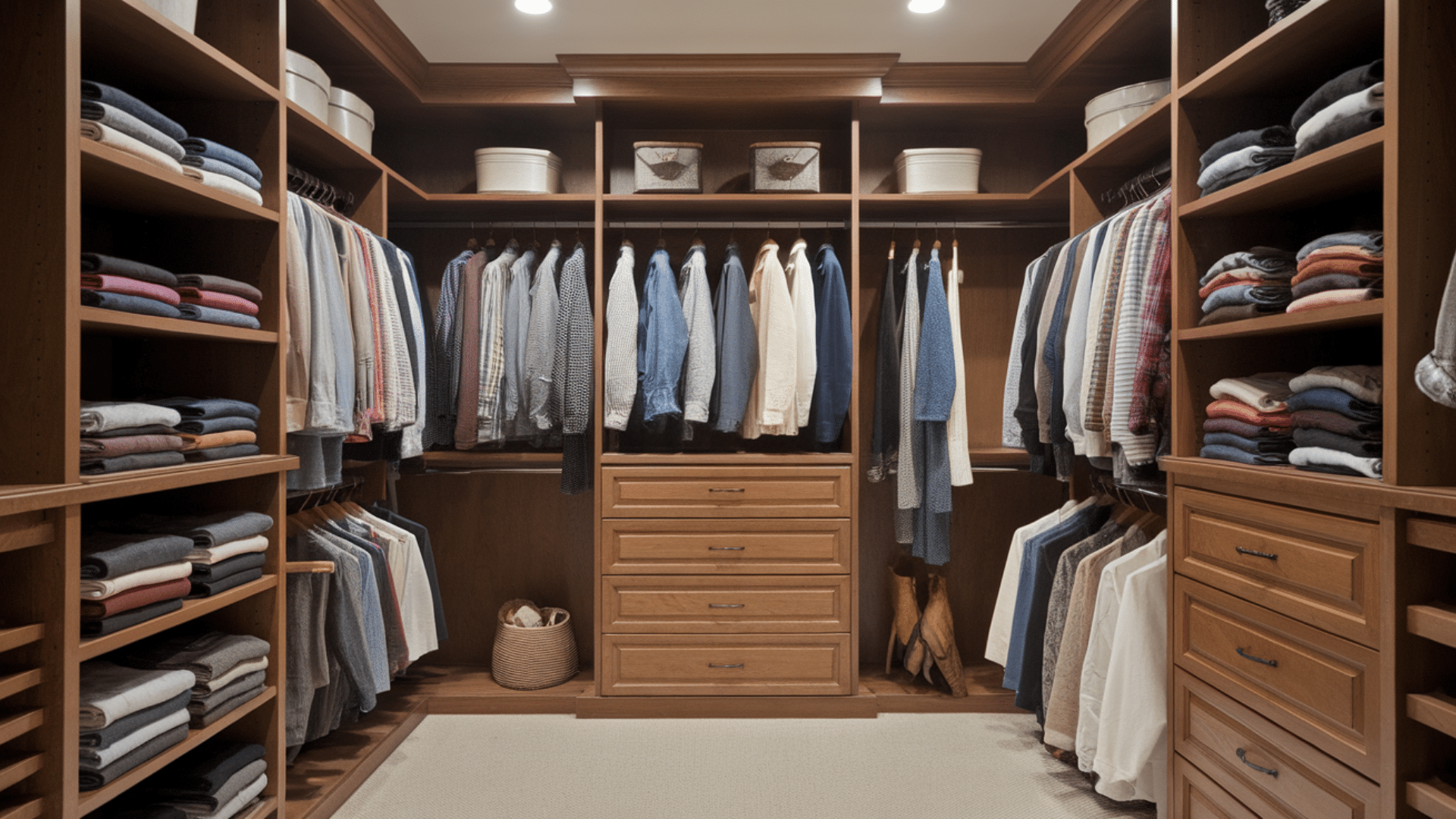
Oak has stood the test of time for good reason. This hardwood delivers extraordinary strength and durability. It holds up well under heavy items without sagging.
The distinctive grain pattern of oak adds character to your closet. It comes in red and white varieties, giving you options for color tone.
Oak takes stain well and can be finished to match most decor styles.
On the downside, oak costs more than pine or plywood. It’s also heavier, which can make installation more difficult. But many homeowners feel the investment pays off in longevity.
Oak shines when used for:
- Heavy-duty storage needs
- Long-lasting closet systems
- Traditional or craftsman-style homes
- Shelves that will see heavy use
5. Maple
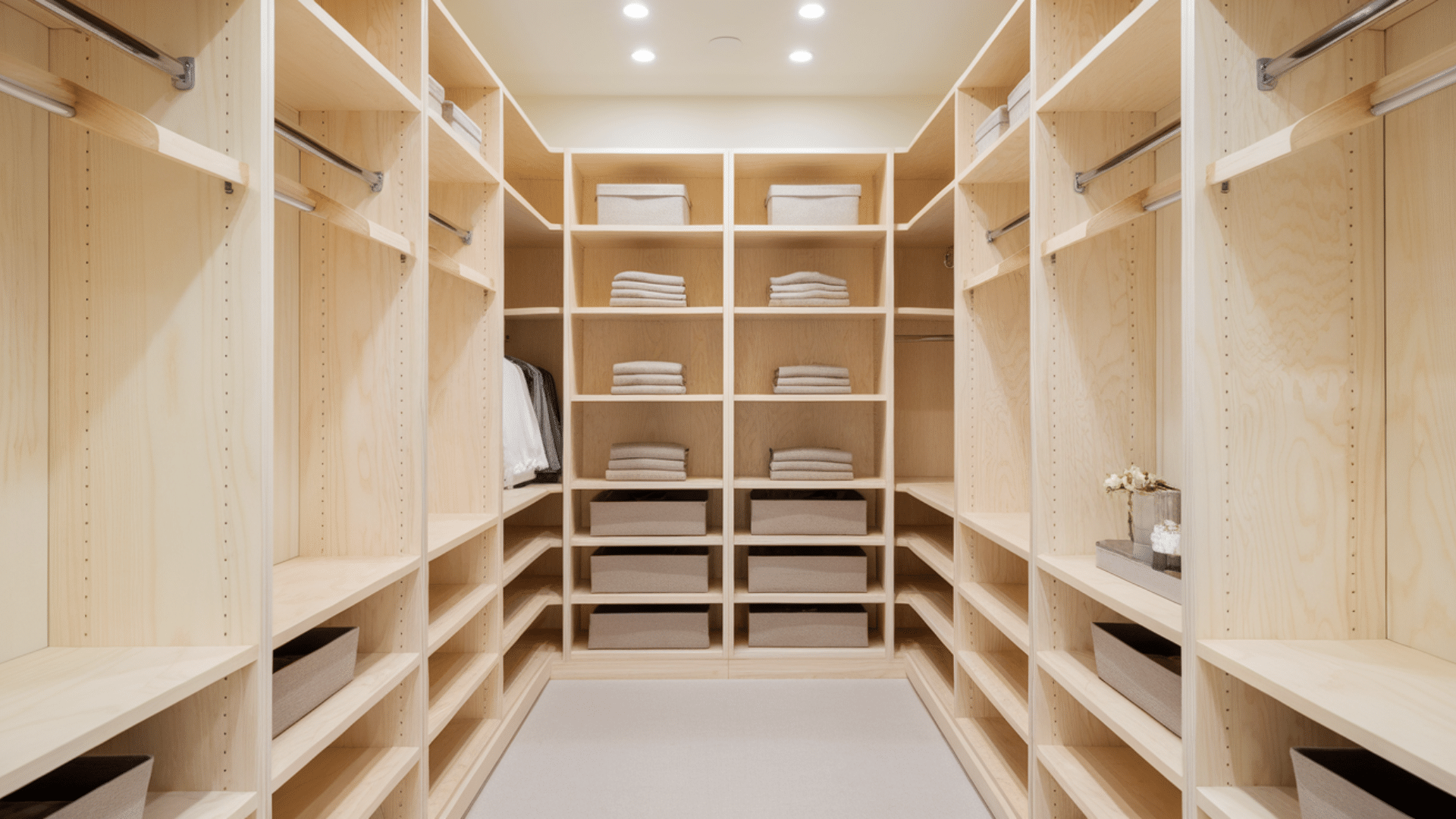
Maple delivers a clean, consistent look with minimal grain patterns. This hardwood has a light, creamy color that brightens up closet spaces.
The smooth, tight grain of maple makes it resistant to dings and dents. It’s extremely hard, making it perfect for shelves that will hold heavy items. The subtle grain pattern works well in modern or minimalist closets.
You’ll pay more for maple than for pine or plywood. It can also be challenging to work with due to its density. But for durability and clean design, maple is hard to beat.
Consider maple for:
- Modern closets
- Heavy storage needs
- Light, bright storage spaces
- Long-term investments
6. Birch
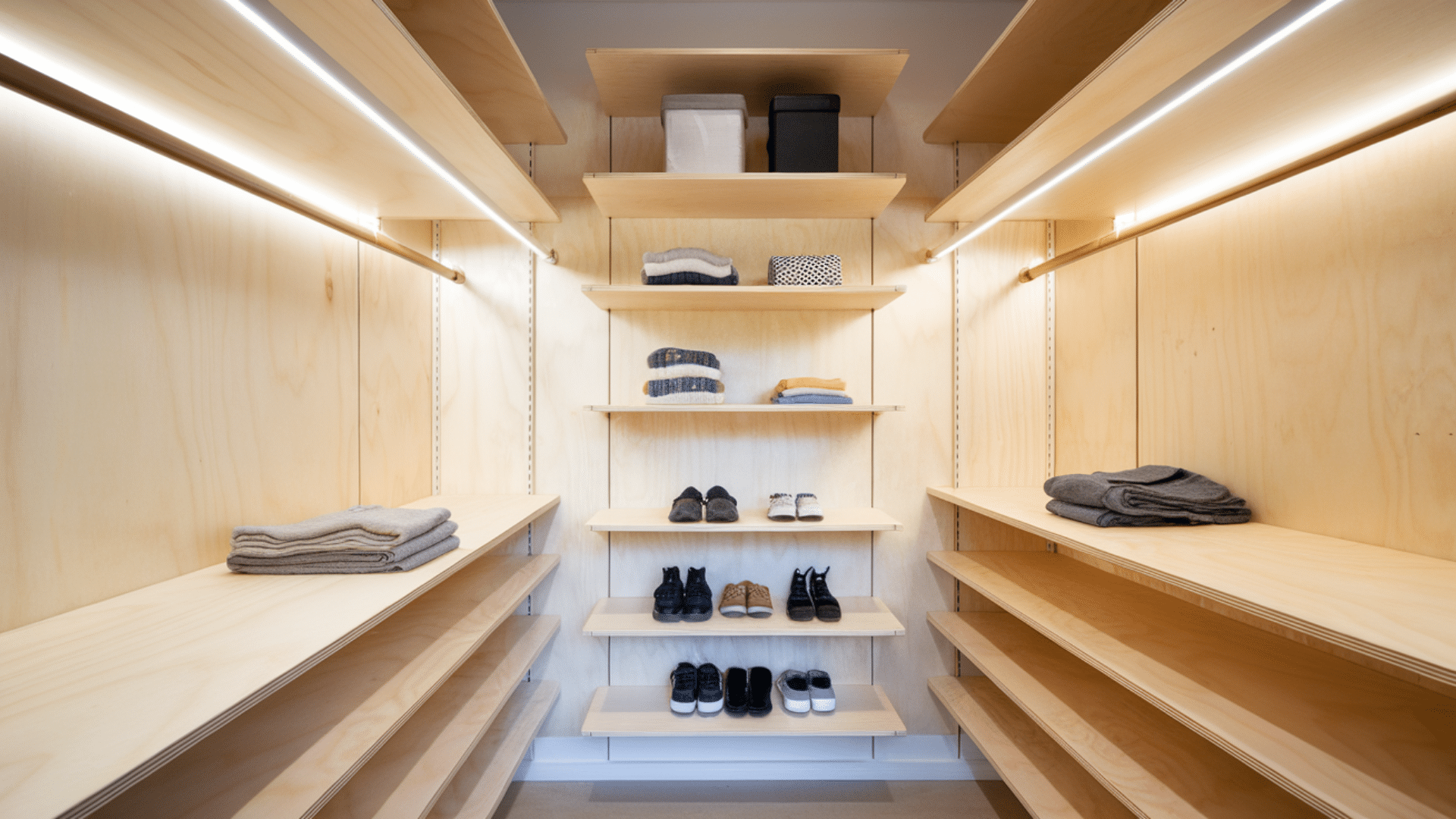
Birch offers many of maple’s advantages at a lower price point. This hardwood has a light color and subtle grain pattern. It works well in modern or Scandinavian-inspired spaces.
Compared to maple, birch costs less while still providing good strength. It resists warping and holds up well under moderate loads. Birch plywood is especially popular for custom closet systems.
One challenge with birch is staining. It can absorb stain unevenly unless properly prepared. For best results, use a pre-stain conditioner or stick with clear finishes or paint.
Birch works well for:
- Budget-conscious hardwood seekers
- Modern, clean design
- Medium-duty storage needs
- DIY-friendly projects
7. Cedar
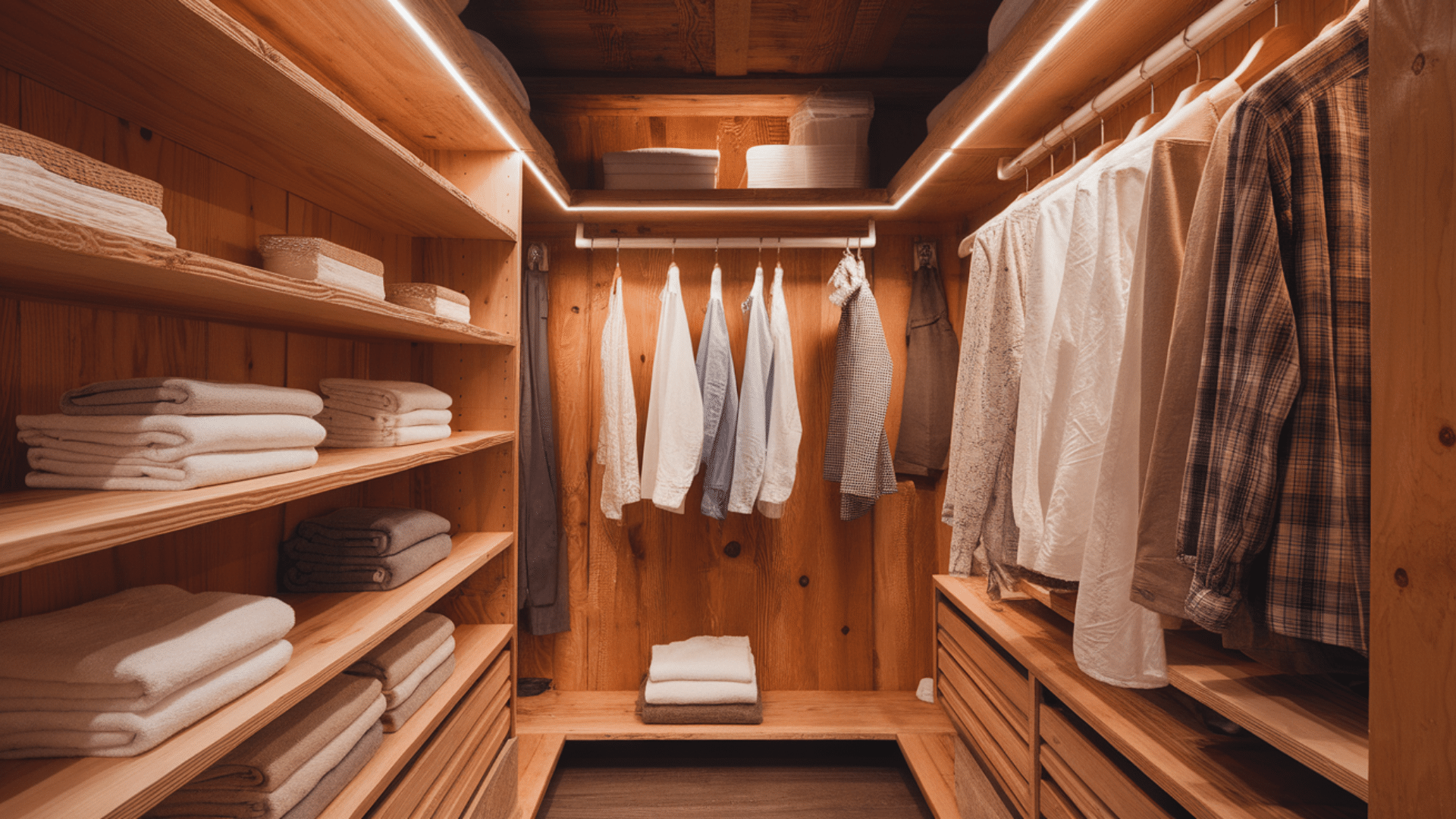
Cedar stands out for its distinctive aroma and natural insect-repelling properties. This softwood has long been used in closets to protect clothing from moths.
The reddish-brown color and straight grain of cedar look beautiful with a clear finish.
You don’t need to stain or paint cedar—many people prefer its natural appearance and scent. It’s also relatively lightweight and easy to work with.
Keep in mind that cedar is softer than hardwoods like oak or maple. It can dent and scratch more easily. Over time, the scent will fade unless the wood is sanded to refresh it.
Cedar excels for:
- Clothing storage areas
- Linen closets
- Natural, chemical-free pest protection
- Natural design
8. Walnut
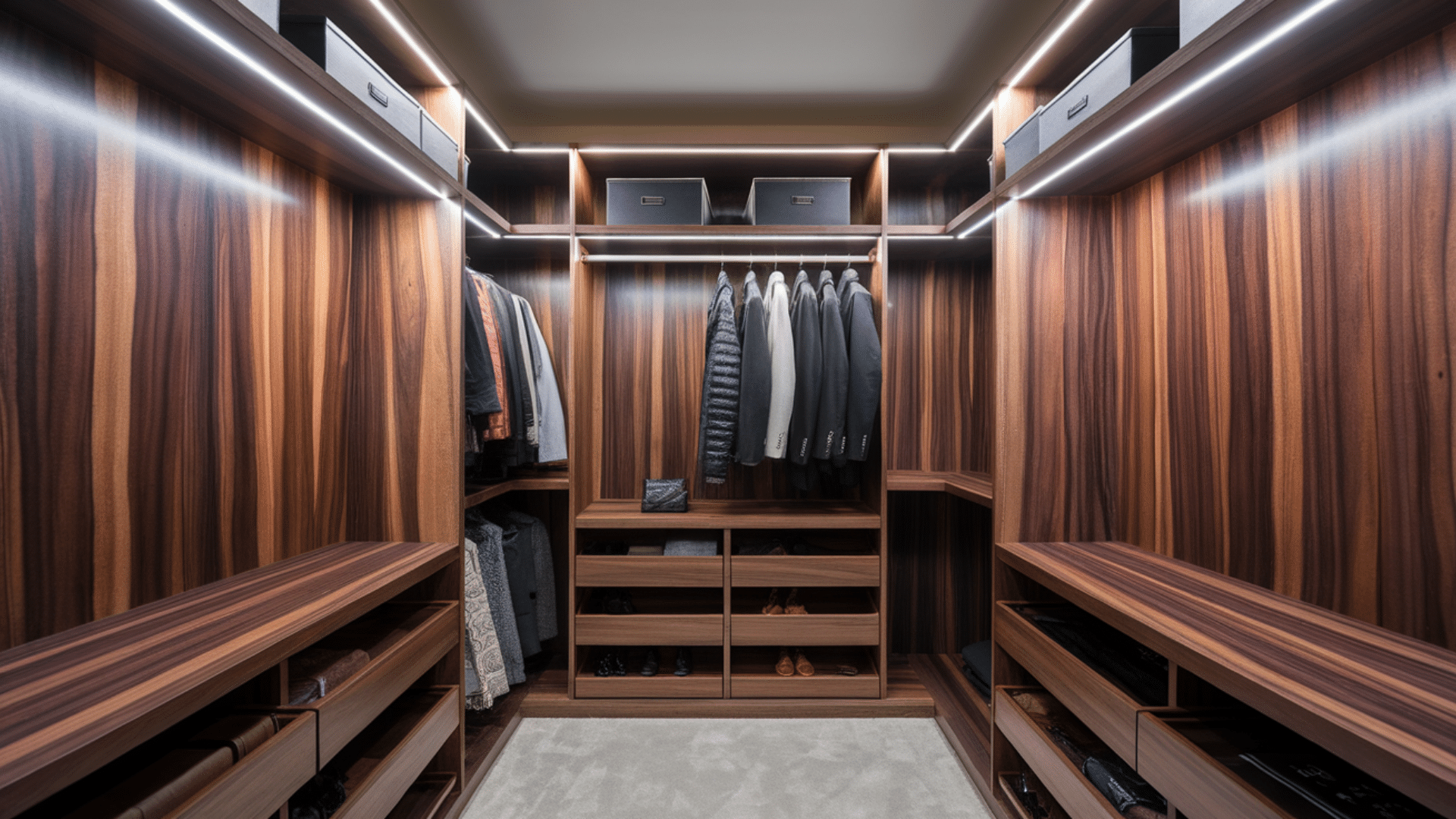
Walnut creates a statement with its deep brown color and beautiful grain. This premium hardwood offers both beauty and durability in one package.
The natural color of walnut ranges from chocolate brown to purple-black. It often features stunning grain patterns that add visual interest.
Walnut is also strong enough to support heavy items without sagging.
The luxury comes at a price—walnut costs significantly more than most other woods. It’s also not as widely available as pine or oak. But for high-end closets, walnut delivers unmatched beauty.
Consider walnut for:
- Luxury closet builds
- Mid-century modern styles
- Showcase closets
- Long-term investments
9. Cherry
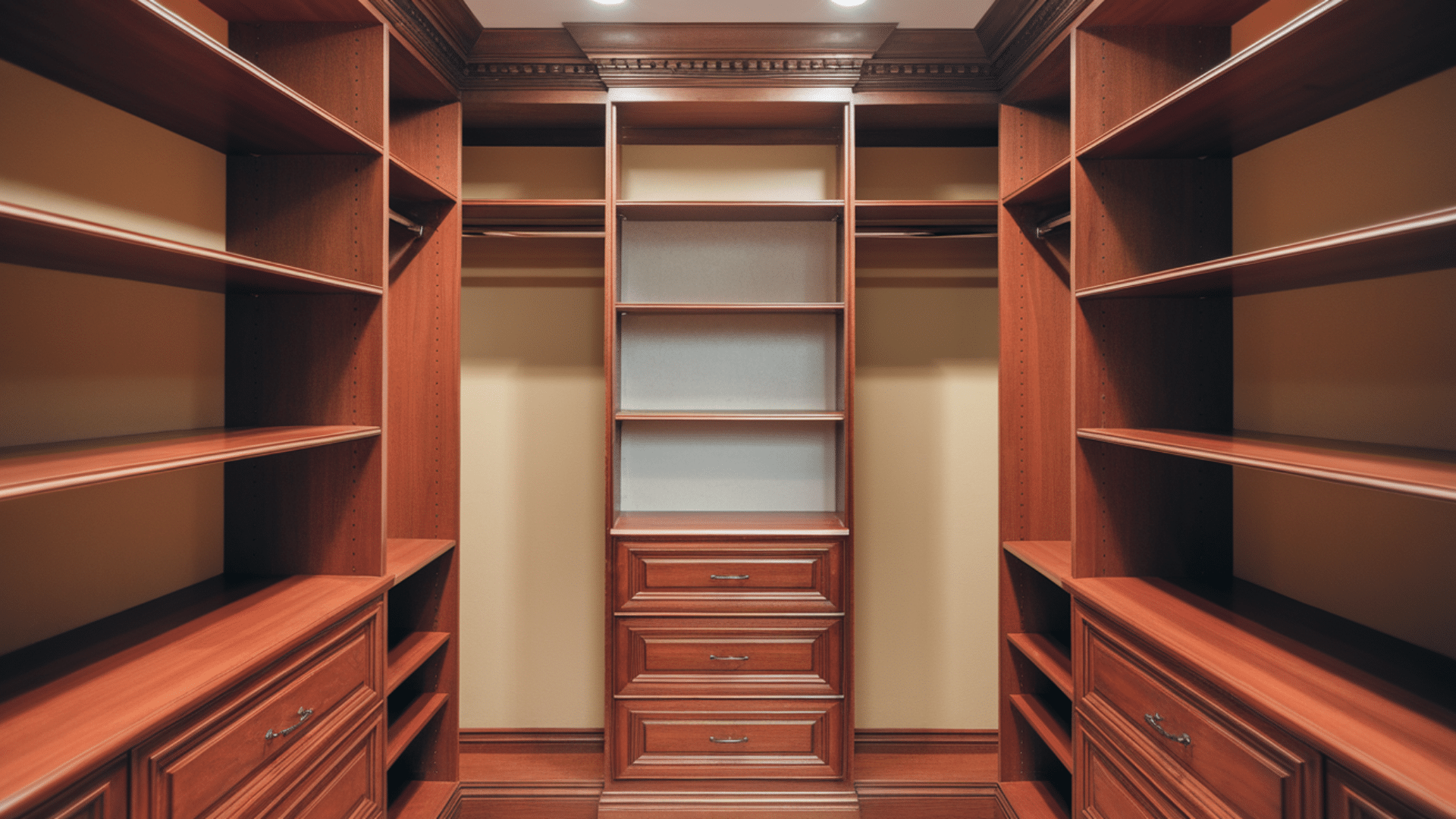
Cherry wood ages like fine wine, deepening in color over time. This hardwood starts with a light reddish-brown tone that gradually darkens to a rich mahogany.
The fine, straight grain of cherry provides a smooth surface for closet shelves. It’s moderately strong, suitable for most storage needs.
Cherry has long been prized in fine furniture for its warm, inviting appearance.
Like walnut, cherry commands a premium price. It can also change color unevenly if parts are exposed to different amounts of light. But for those seeking warm beauty, cherry is worth considering.
Cherry works best for:
- Traditional, formal closets
- Long-term investments
- Warm color schemes
- Medium to heavy storage needs
10. Bamboo
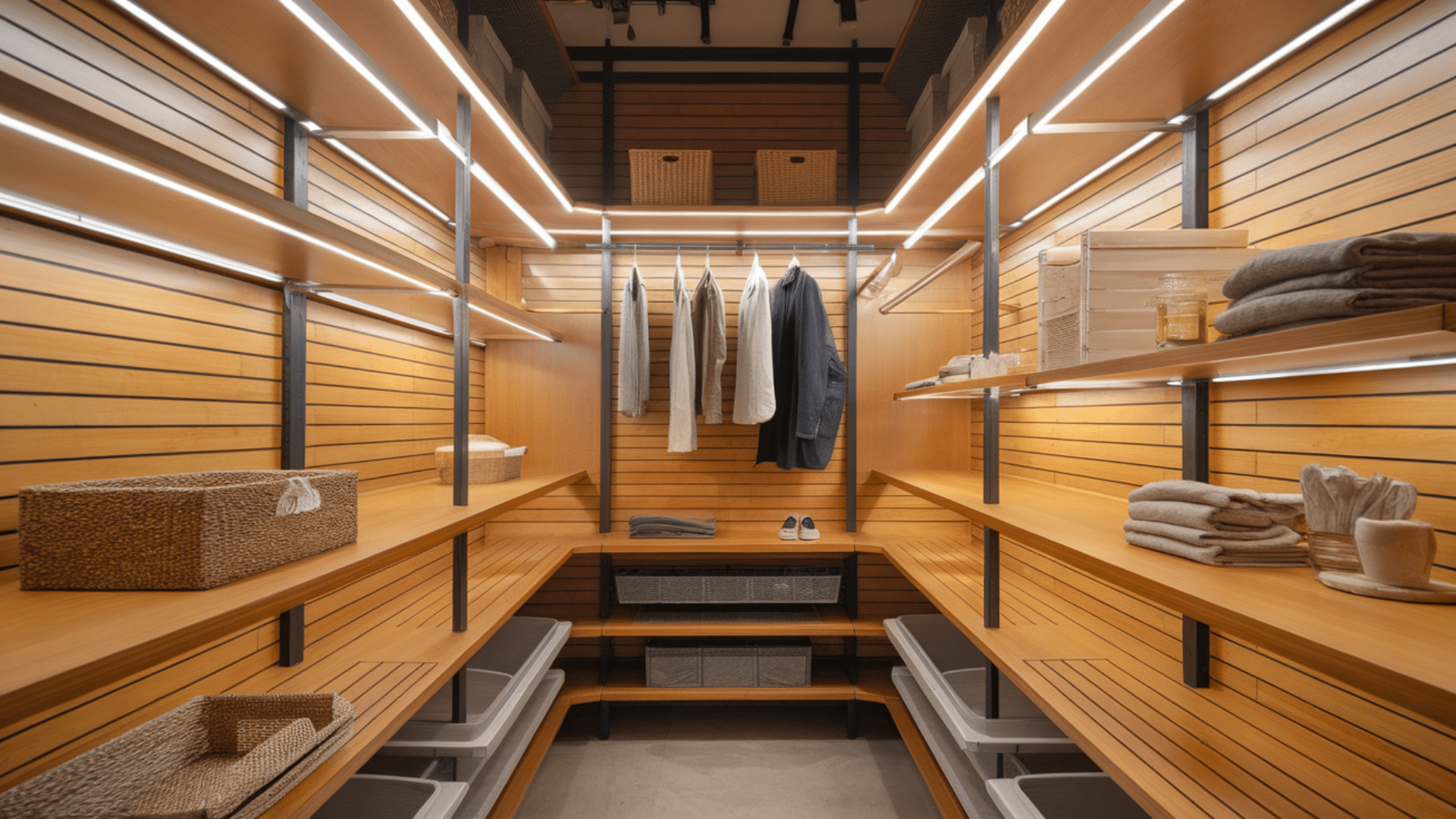
Bamboo brings sustainable style to your closet. Though technically a grass, processed bamboo performs like hardwood. Its unique look features visible nodes that add character.
This material resists moisture better than many woods. It’s also quite strong, making it suitable for moderately heavy items. Bamboo’s unique appearance works well in contemporary or Asian-inspired designs.
You’ll typically pay more for bamboo than for traditional woods like pine. Availability can also be limited compared to common lumber options.
But for eco-conscious homeowners, bamboo offers a sustainable option.
Consider bamboo for:
- Eco-friendly builds
- Modern, unique design
- Humid environments
- Medium-duty storage
11. Ash
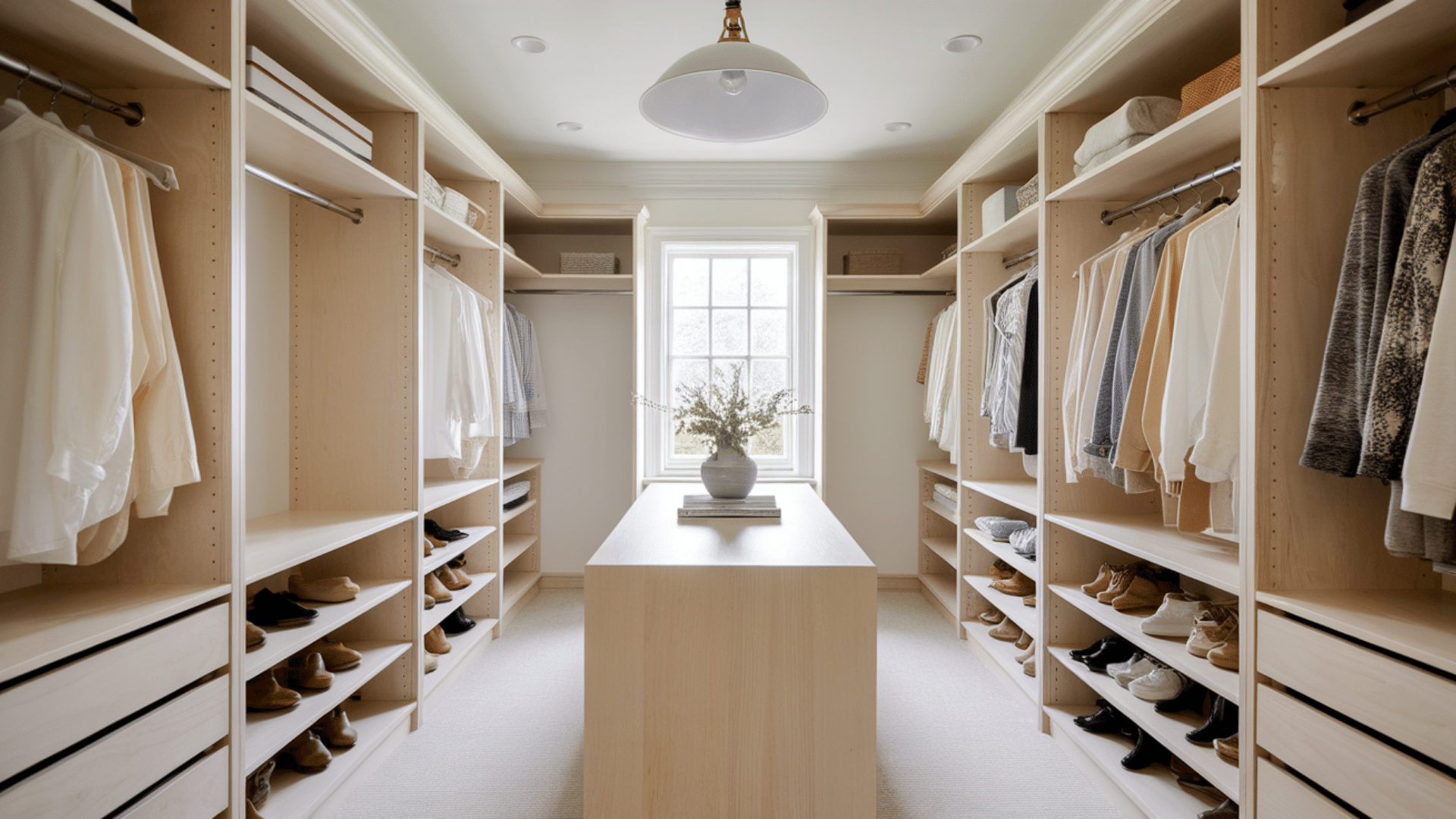
Ash provides excellent strength-to-weight ratio. This hardwood resembles oak but with a lighter color and straighter grain pattern. It’s prized for its flexibility and durability.
The light color of ash brightens up closet spaces. It takes stain well, allowing you to achieve various looks.
Ash is also less prone to splitting than some hardwoods, making it forgiving during installation.
While not as expensive as walnut or cherry, ash costs more than pine or plywood. It can also be harder to find at your usual home centers. But its combination of strength and good looks makes it worth seeking out.
Ash excels for:
- Heavy-duty storage needs
- Light, bright closet spaces
- Classic styles
- Long spans without sagging
12. Poplar
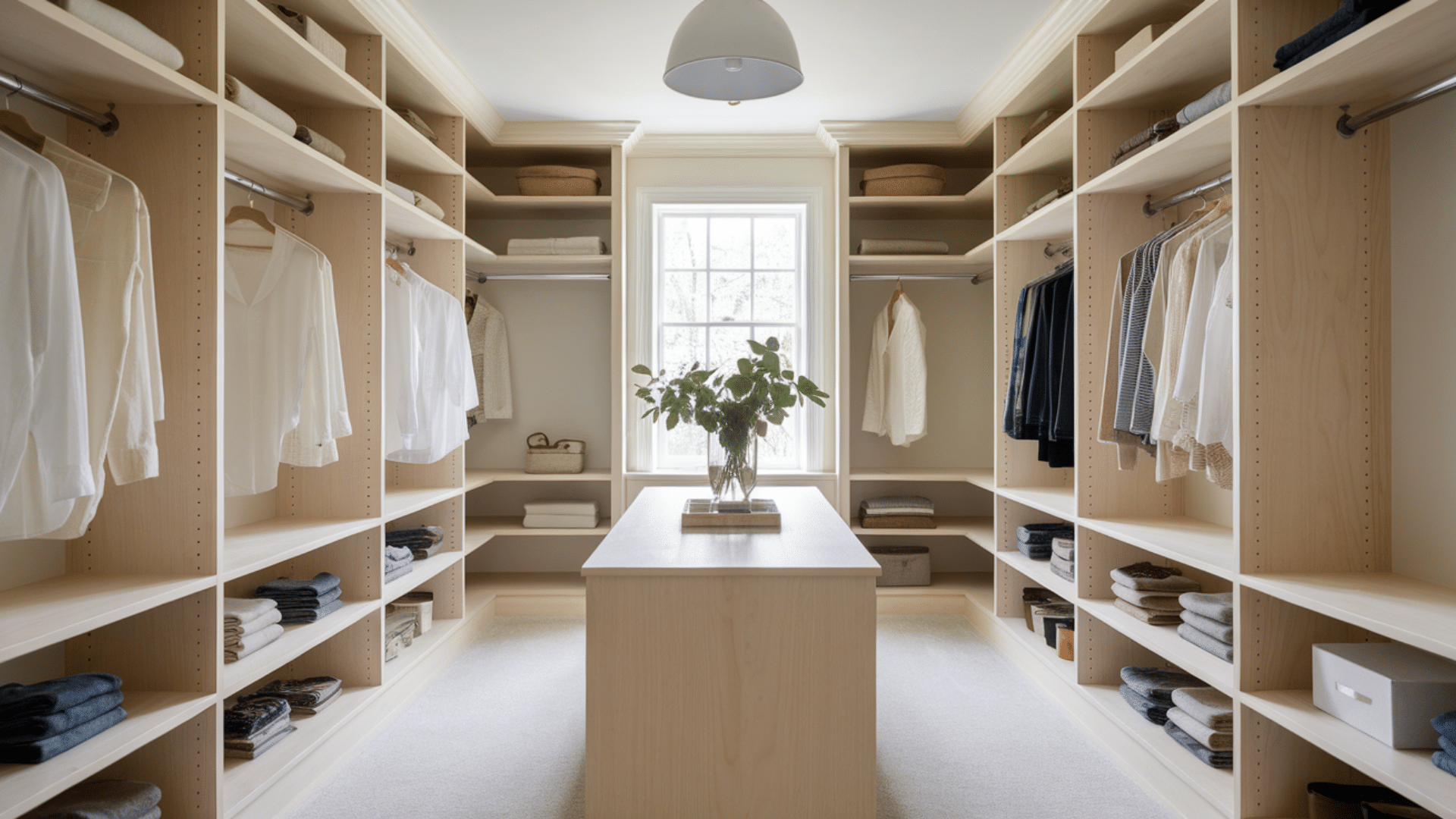
Poplar offers an economical hardwood option. This lightweight wood has a straight, uniform grain with minimal knots. It’s often chosen when a painted finish is planned.
The natural color of poplar ranges from pale yellow to greenish-brown. These varied tones make it less desirable for clear finishes but perfect for painting. Poplar cuts and sands easily, making it DIY-friendly.
While classified as a hardwood, poplar is softer than oak or maple. It dents more easily and isn’t ideal for heavy items. But for painted closet systems on a budget, poplar delivers good value.
Consider poplar for:
- Painted finishes
- Budget-friendly builds
- Light to medium storage needs
- DIY projects
13. Teak
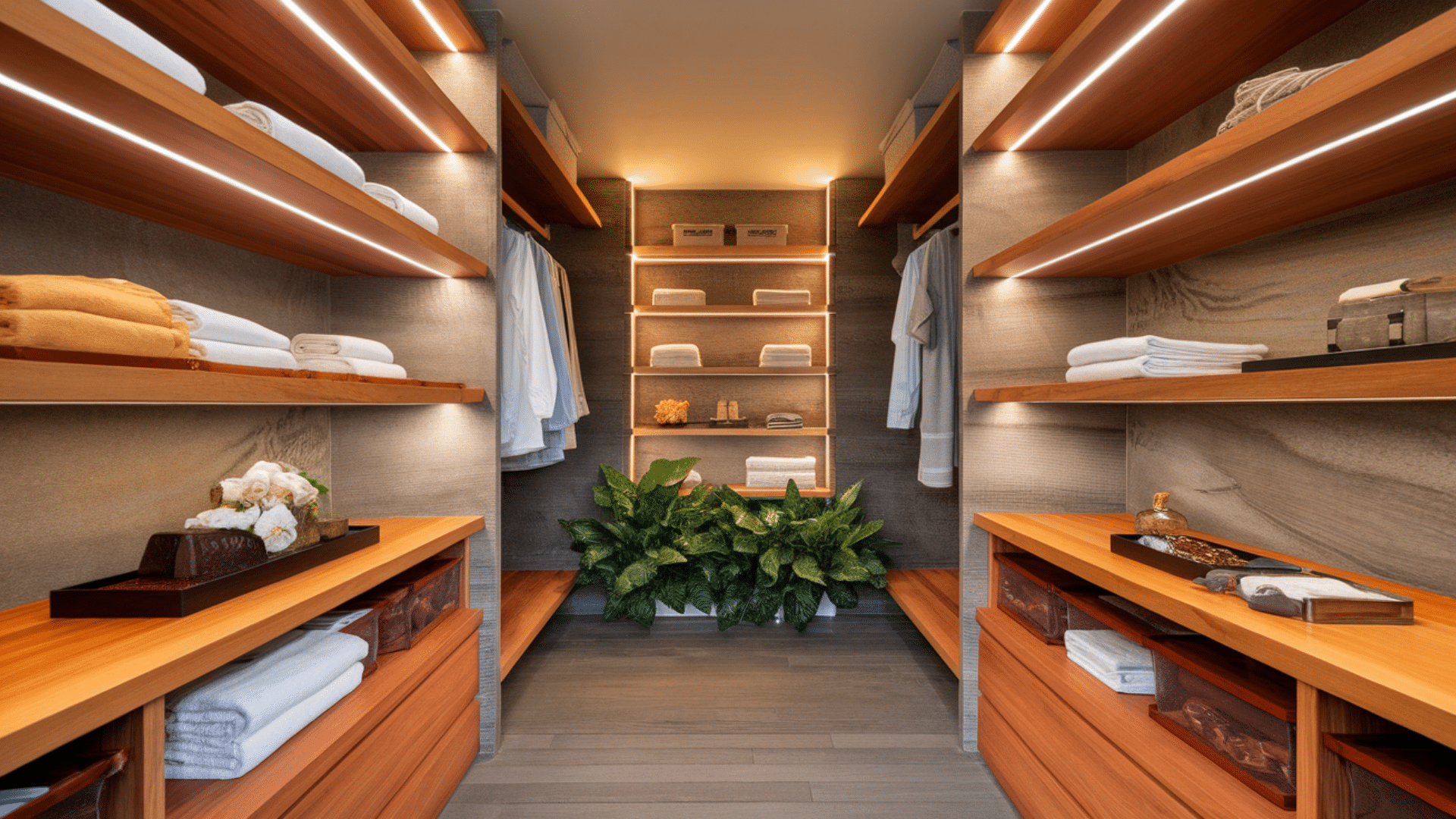
Teak stands up to humidity better than almost any other wood. This exotic hardwood contains natural oils that resist water damage and repel insects.
The golden-brown color of teak adds warmth to closet spaces. It develops a silver-gray patina over time if left untreated.
Teak is extremely durable, easily lasting for decades with minimal maintenance. The exceptional qualities of teak come with a high price tag. It’s one of the most expensive woods available.
But in humid environments or luxury builds, teak’s performance justifies the investment.
Teak works best for:
- Humid climates
- High-end closets
- Long-term investments
- Areas with moisture concerns
14. Douglas Fir
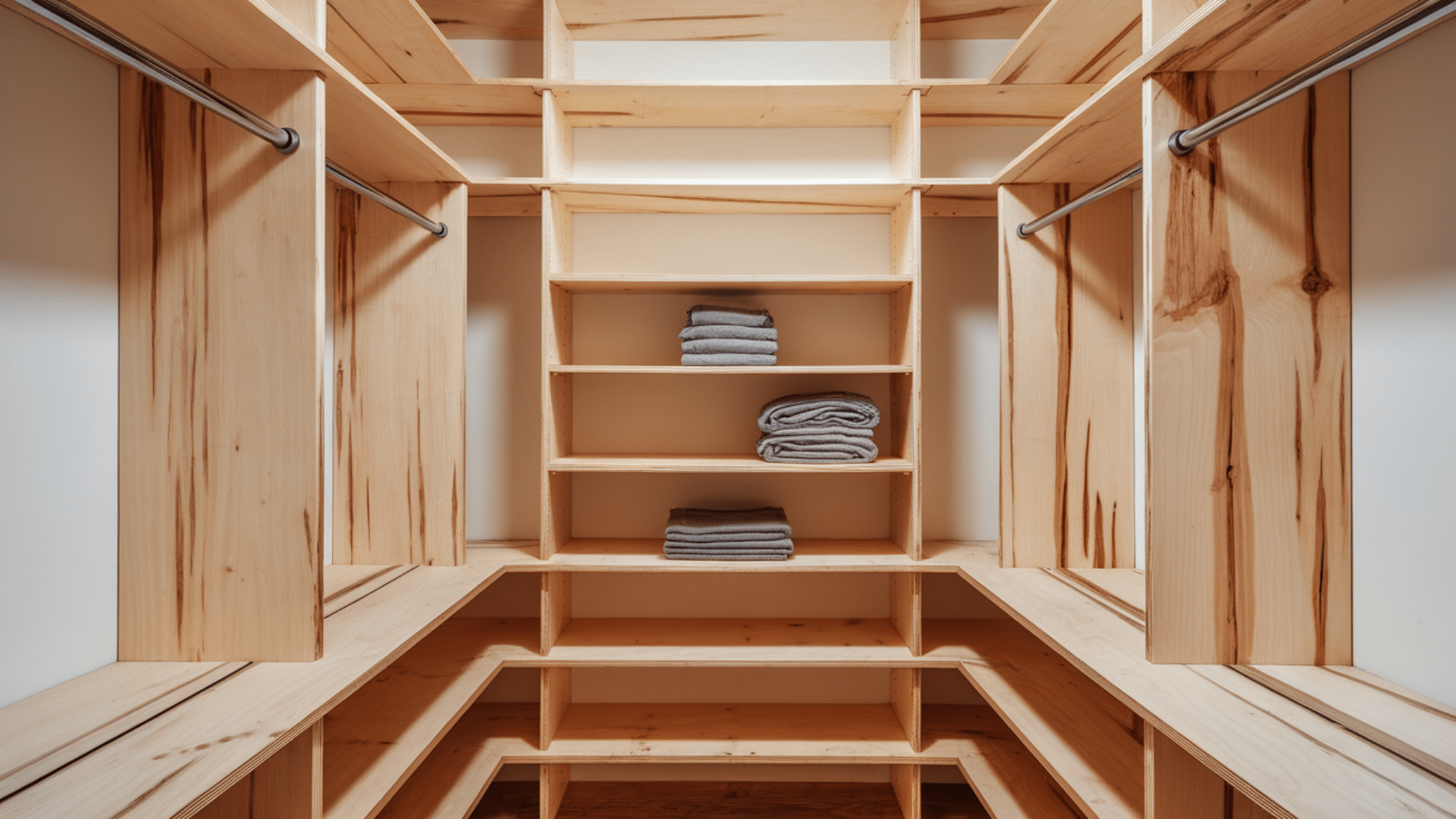
Douglas fir offers impressive strength for a softwood. This light-colored wood features a straight grain with a reddish tint. It’s commonly used in construction but works well for utilitarian closet shelving.
The affordability of Douglas fir makes it attractive for large projects. It’s widely available at lumber yards and home centers.
Douglas fir is also lightweight while still providing good structural support.
On the downside, this softwood dents and scratches more easily than hardwoods. It may also be prone to warping if not properly dried. The stand-out grain pattern might not suit all design preferences.
Consider Douglas fir for:
- Budget-conscious builds
- Casual design
- Utility closets
- Large projects
15. Alder
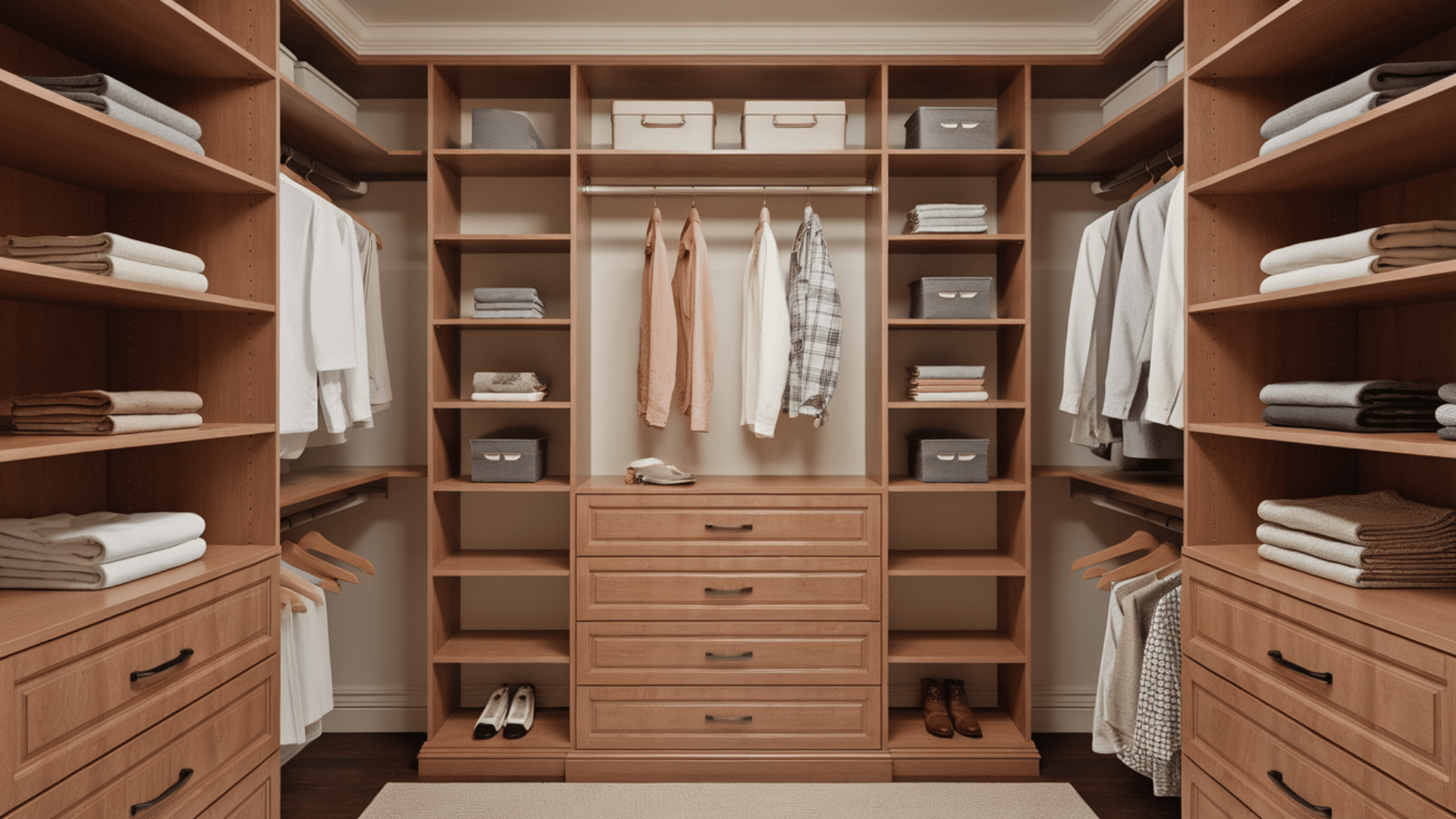
Alder provides a medium-priced option with excellent workability. This soft hardwood has a straight, even grain and warm reddish tint. It resembles cherry but costs significantly less.
One of alder’s best qualities is how evenly it accepts stain. You can achieve consistent results even with darker stains. Alder also cuts and sands easily, making it friendly for DIY projects.
Being softer than many hardwoods, alder is more susceptible to dents and scratches. It works best in areas where items are stored carefully.
But for its price point, alder offers attractive design and decent performance.
Alder excels for:
- Mid-range budgets
- Warm, classic design
- Light to medium storage
- Stained finishes
How to Choose the Right Wood for Your Needs?
Now that we’ve covered all options, how do you make the final decision? The best choice depends on your specific situation.
First, think about what you’ll store. Heavy items like books or folded jeans need stronger woods. Oak, maple, or good plywood can handle the weight. For lighter items like shirts or linens, pine or MDF might work fine.
Next, consider your climate. If you live somewhere humid, moisture-resistant options like teak, cedar, or bamboo make sense. In dry climates, you have more flexibility.
Your budget plays a huge role too. Be realistic about what you can spend. Sometimes a less expensive wood with proper reinforcement works better than stretching your budget for a premium option.
Don’t forget about style. The wood should match your closet’s overall design. Modern closets often pair well with maple or birch. Traditional spaces might call for oak or cherry.
Finally, think about maintenance. Some woods need more care than others. If you want low-maintenance shelves, consider plywood with a durable finish or naturally resistant woods like teak.
Conclusion
Choosing the right wood for your closet shelves doesn’t have to be overwhelming. From budget-friendly pine to luxurious walnut, there’s an option for every need and budget.
Focus on matching the wood to your specific storage requirements and style preferences.
Consider the weight capacity, appearance, and environmental conditions when making your decision.
Remember that proper installation matters as much as material choice. Even the strongest wood can fail if improperly supported. Take time to research span tables and support recommendations.
With the information in this guide, you’re now equipped to make an informed choice that will provide years of reliable storage and boost the beauty of your home.

